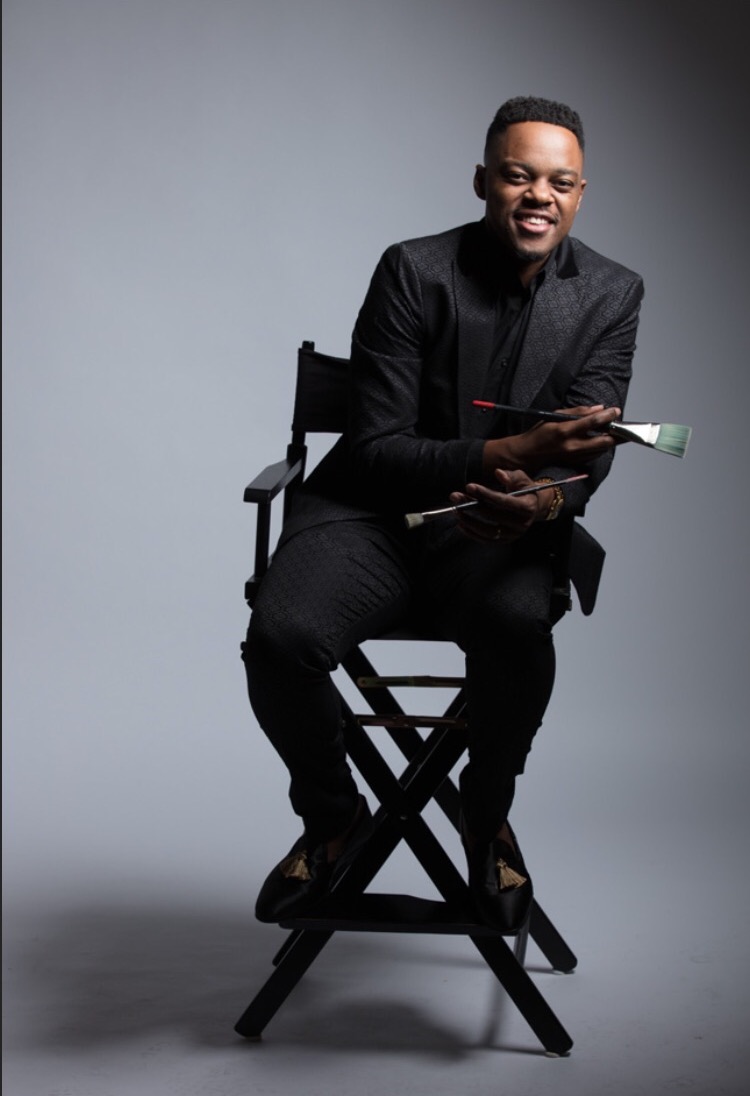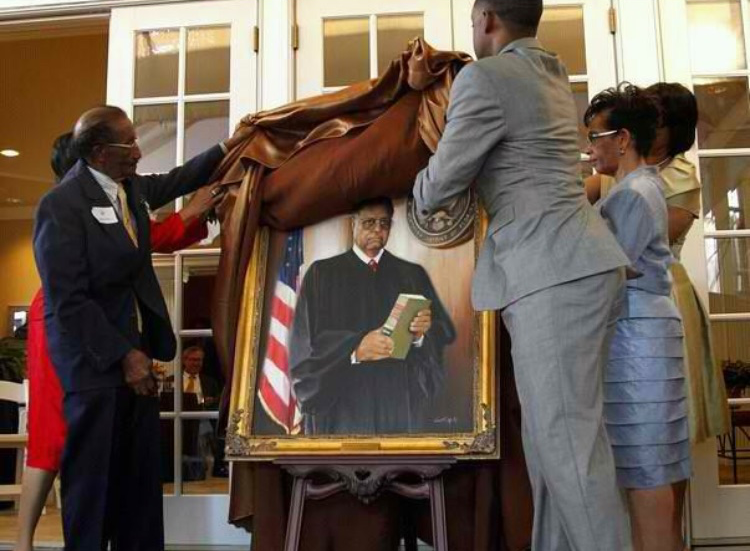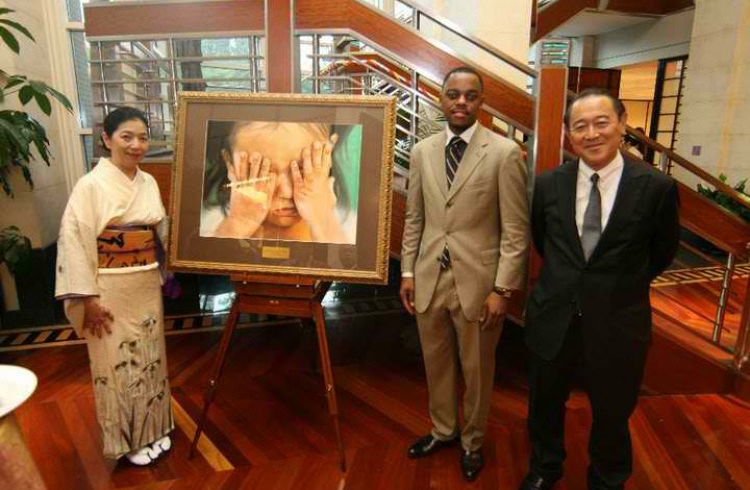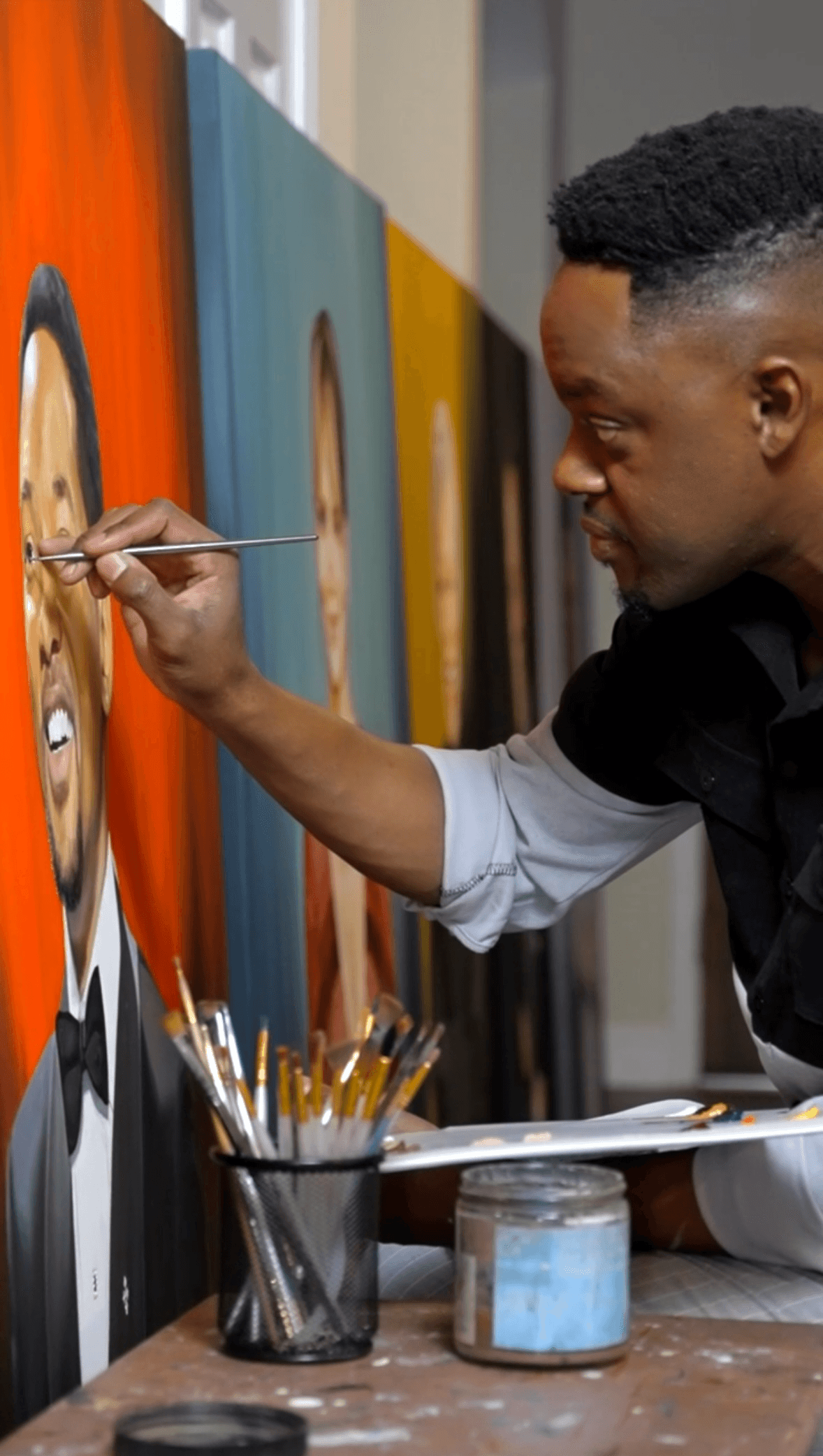Meet Carl Hess | Portrait Artist


We had the good fortune of connecting with Carl Hess and we’ve shared our conversation below.
Hi Carl, what was your thought process behind starting your own business?
I started my Portrait painting business in 2005 when I painted my first clergy leader, which was the Pastor andFirst Lady of my hometown church. With this natural talent, I’ve always had a desire to use it to honor the leaders of my community. My mentor encouraged me to consider being a professional artist. I began to research Portrait Artist and discovered the elite circle of artist that painted the leaders of our country. I was young, but my ambition drove me to break into the profession, even at a young age.

Alright, so let’s move onto what keeps you busy professionally?
Please tell us more about your art.
My art is rooted in tradition, legacy, and purpose. I specialize in hand-painted portraiture, with a focus on capturing the spirit and dignity of religious leaders, particularly within the Black church community. What sets my work apart is its intentionality—I don’t just paint faces; I preserve legacy. Each brushstroke is meant to honor not just a person, but their life’s work, their spiritual leadership, and the history they represent. In a world that moves fast and favors digital, I remain committed to the power of timeless, tangible portraiture.
What are you most proud of or excited about?
I’m most proud of the relationships I’ve built through my work and the impact it has had. When a bishop or pastor sees themselves immortalized in oil, there’s a deep emotional response—it’s about being seen, honored, and remembered. One of the most meaningful milestones for me was painting Bishop Walker and having the opportunity to show my work at religious conferences. Now, I’m excited about returning to that space with a refined vision: to paint the entire AME Zion Board of Bishops and eventually document leaders across entire denominations.
How did you get to where you are today professionally? Was it easy?
It wasn’t easy. I’ve balanced being a full-time educator at a Title 1 school while building my art career from the ground up. There were years when I put my own creative dreams on hold to focus on stability, family, and service to others. But I never let go of the vision. I marketed myself by showing up in spaces that mattered—churches, conferences, community events—carrying my portfolio and faith in my purpose.
How did you overcome the challenges?
Faith, grit, and consistency. I had to learn how to pivot—how to stay connected to my art even when I couldn’t paint full-time. I also leaned into my skills as an educator and designer, which helped me develop discipline and the ability to tell stories through more than just visuals. Every challenge sharpened my perspective and made my work more meaningful.
What are the lessons you’ve learned along the way?
I’ve learned that timing is everything—and so is preparation. Just because a door isn’t open today doesn’t mean it won’t open tomorrow, but you have to be ready. I’ve learned not to compare my journey to anyone else’s and to trust the unique calling I’ve been given. And most of all, I’ve learned that legacy matters. What we create today tells the story of tomorrow.
What do you want the world to know about you or your brand and story?
I want the world to know that my work is about honoring people who give of themselves every day, often without recognition. My portraits are visual monuments—crafted to stand the test of time. My story is one of persistence, faith, and intention. I believe that every leader, every servant, deserves to be remembered in a way that reflects their dignity. My brand is about legacy, excellence, and cultural preservation—through the eyes and hands of an artist who deeply cares.

Let’s say your best friend was visiting the area and you wanted to show them the best time ever. Where would you take them? Give us a little itinerary – say it was a week long trip, where would you eat, drink, visit, hang out, etc.
If my best friend was visiting Dallas for a week, here’s how we’d do it—artfully and soulfully.
Day 1: Deep Ellum – Art, Murals & Music
We’d start in Deep Ellum, one of the most vibrant art districts in Dallas. The murals alone are a walking gallery—perfect for snapping photos and soaking in the energy of the city’s creative pulse. We’d grab brunch at AllGood Café (for that old-school, artsy diner vibe), then check out Kettle Art Gallery or pop into Deep Vellum Books, which supports indie authors and is a cultural gem.
That night, we’d catch live music at The Free Man Cajun Café or a show at Trees—Dallas music history lives in these walls.
Day 2: Bishop Arts District – Indie Cool & Good Food
We’d head to Bishop Arts, where art, food, and quirky shops come together. First stop: The Wild Detectives—a bookstore/bar/coffee spot that’s always got something creative going on. For lunch, we’d eat at Hattie’s (Southern food, elevated). I’d take them to see local galleries like Galleri Urbane, and then we’d end the day with dessert from Emporium Pies—because you don’t come to Dallas and skip that.
Day 3: Museum Day in the Arts District
Time to dress up a bit and hit the Dallas Arts District—starting with the Dallas Museum of Art and Nasher Sculpture Center. The art here ranges from classical to contemporary, and it’s inspiring every time. Across the street is Klyde Warren Park, where we’d grab something from the food trucks and people-watch.
That evening, we’d have dinner at Flora Street Café (for fine dining with a creative twist), or hit up Tei-An if we’re feeling fancy Japanese cuisine.
Day 4: South Dallas Culture + Fair Park
This is where I’d take them to see the soul of Dallas. We’d visit the African American Museum, which is tucked into Fair Park—it’s small but powerful. Depending on the season, we’d check out local festivals or art shows happening there.
For dinner, we’d hit Sweet Georgia Brown or Off the Bone BBQ—because you can’t fully experience Dallas without some real soul food.
Day 5: Studio Hopping + Meet the Artists
I’d line up visits with a few local artists whose work I admire—Dallas has such a supportive art community. We might visit The Cedars Union or Goldmark Cultural Center, where artists open their studios to the public. It’s an amazing way to see what’s happening on the ground level of the local art scene.
That night, we’d chill at Sandaga 813—live jazz, grown-folk energy, and the kind of vibe you don’t want to leave.
Day 6: Nature + Public Art
We’d do a reset day and go for a walk at Margaret Hunt Hill Bridge or Trinity Groves—which also has great restaurants with skyline views. Then maybe explore the Meadows Museum at SMU for some Spanish art, and stroll the McKinney Avenue Trolley through Uptown.
Dinner would be at Meddlesome Moth, where even the food presentation feels like an art installation.
Day 7: Art Church + Reflection
On Sunday, we’d visit One Community Church, where I’ve attended since 2013. Then brunch at Yolk or Bread Winners, followed by some final shopping at Flea Style or local Black-owned boutiques in South Dallas.
We’d spend the evening reflecting at White Rock Lake with our kids, watching the sunset, just being present and letting the week soak in.
The Dallas art scene is deep, diverse, and full of soul. Whether it’s a high-end gallery or a mural on a barbershop wall, there’s creativity everywhere here. The people—the musicians, chefs, preachers, and painters—are what make it special. Dallas may not always be the first city people name when they talk about art, but those who know… know.

The Shoutout series is all about recognizing that our success and where we are in life is at least somewhat thanks to the efforts, support, mentorship, love and encouragement of others. So is there someone that you want to dedicate your shoutout to?
My biggest encouragement was my high school art teacher Mrs. Burton. Receiving the blessing of a professional artist was validation that I needed to feel secure about stepping into the profession. This teacher introduced me to oil paint, which is not commonly accepted in a high school classroom. However, this new tool introduced me into a dimension focused on quality and technique. Many students are not introduced to this medium until their college courses. I was ahead of my time because of Mrs. Burton’s belief in my capabilities.
Website: https://www.carlhess.com
Instagram: @carlhessart

